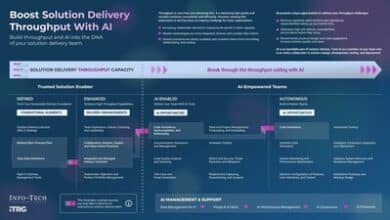As governments worldwide embrace digital transformation, the risk of cyberattacks has grown significantly. To help government security leaders proactively tackle these challenges, Info-Tech Research Group has published a blueprint titled Addressing the Cybersecurity Talent Shortage in Government.
Digital Transformation Increases Cyberthreats
Info-Tech’s research reveals that digital transformation has expanded the digital landscape and cyberthreats. As new technologies, systems, and processes are integrated into government sectors, they create new attack surfaces. These, in turn, expose governments to cyberthreats such as malware, ransomware, and other forms of cybercrime. There is also an urgent need to cultivate a cybersecurity-aware culture among government departments and agencies, addressing the talent gap and enhancing cyber resilience and security.
Three Pillars for Cybersecurity Protection
To respond to these challenges, Info-Tech suggests a “three pillars for protection” approach, comprising:
- Create a Cybersecurity Culture – Employees must understand their role in protecting digital assets, establishing accountability and collaboration in the organization.
- Implement a Cybersecurity Workforce Development Strategy – Governments need a comprehensive development strategy, including acquiring skilled individuals, investing in training programs and partnering with educational institutions.
- Harness Artificial Intelligence – AI and machine learning can help detect threats faster, increase accuracy, and assist in recruitment.
Attracting and Retaining Cyber Talents
Attracting and retaining top talent is a challenge for government agencies due to limitations such as poor competitiveness in salaries, career growth, autonomy, and flexibility. Info-Tech’s blueprint aims to guide governments in overcoming these obstacles and building a skilled workforce capable of combating cyberthreats effectively.
In summary, governments must proactively address the growing cybersecurity talent shortage and adapt their strategies to protect vital infrastructure. The “three pillars for protection” approach offers a framework for government security leaders to create a cybersecurity culture, develop a skilled workforce, and harness advanced technologies like AI to counter the ever-increasing cyber risks.



